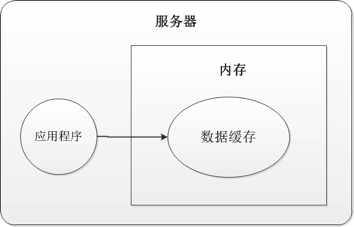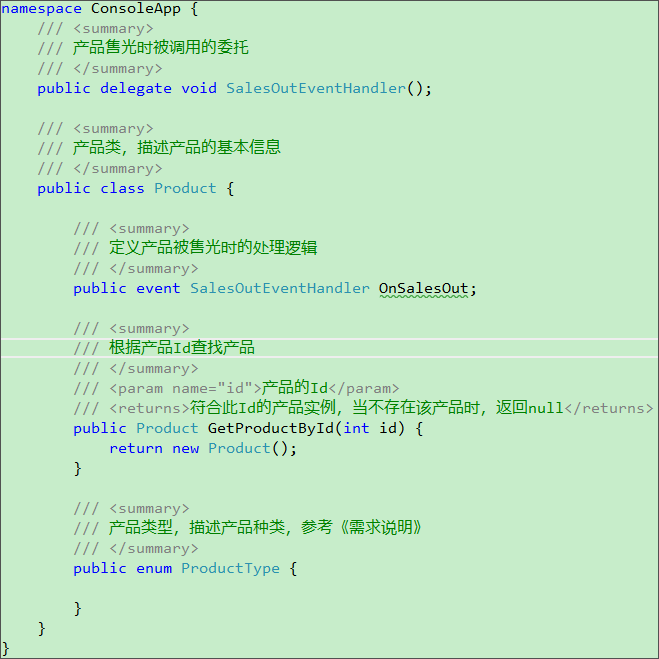|
|
在上一篇隨筆 Timus 1037. Memory management 的“進(jìn)一步的討論”小節(jié)中,我提到:
現(xiàn)在,就開始行動(dòng)吧。
首先,需要一個(gè)接口,用來獲取鍵以及獲取和設(shè)置值,如下所示:
namespace Skyiv.Util{ interface IKeyValue { K GetKey(T x); V GetValue(T x); void SetValue(T x, V v); }}
接著,就是我們的帶鍵值的優(yōu)先隊(duì)列 KeyedPriorityQueue 登場了:
using System;using System.Collections.Generic;namespace Skyiv.Util{ class KeyedPriorityQueue { IComparer comparer; IKeyValue kver; Dictionaryint> keys; bool hasKey; T[] heap; public int Count { get; private set; } public KeyedPriorityQueue(IKeyValue kv) : this(null, kv) { } public KeyedPriorityQueue(int capacity, IKeyValue kv) : this(capacity, null, kv) { } public KeyedPriorityQueue(IComparer comparer, IKeyValue kv) : this(16, comparer, kv) { } public KeyedPriorityQueue(int capacity, IComparer comparer, IKeyValue kver) { this.keys = new Dictionaryint>(); this.comparer = (comparer == null) ? Comparer.Default : comparer; this.kver = kver; this.hasKey = (kver != null); this.heap = new T[capacity]; } public bool ContainsKey(K key) { return keys.ContainsKey(key); } public void Update(T v) { if (!hasKey) throw new NotSupportedException(); if (typeof(T).IsValueType) throw new InvalidOperationException("T 不能是值類型"); if (!ContainsKey(kver.GetKey(v))) throw new ArgumentOutOfRangeException("v", v, "更新優(yōu)先隊(duì)列時(shí)無此健值"); var id = keys[kver.GetKey(v)]; var cmp = comparer.Compare(v, heap[id]); kver.SetValue(heap[id], kver.GetValue(v)); // 注意: 這一句要求 T 是引用類型,不能是值類型 if (cmp < 0) SiftDown(id); else if (cmp > 0) SiftUp(id); } public void Push(T v) { if (Count >= heap.Length) Array.Resize(ref heap, Count * 2); if (hasKey) keys[kver.GetKey(v)] = Count; heap[Count] = v; SiftUp(Count++); } public T Pop() { var v = Top(); if (hasKey) keys.Remove(kver.GetKey(v)); heap[0] = heap[--Count]; if (Count > 0) SiftDown(hasKey ? (keys[kver.GetKey(heap[0])] = 0) : 0); return v; } public T Top() { if (Count > 0) return heap[0]; throw new InvalidOperationException("優(yōu)先隊(duì)列為空"); } void SiftUp(int n) { var v = heap[n]; for (var n2 = n / 2; n > 0 && comparer.Compare(v, heap[n2]) > 0; n = n2, n2 /= 2) heap[hasKey ? (keys[kver.GetKey(heap[n2])] = n) : n] = heap[n2]; heap[hasKey ? (keys[kver.GetKey(v)] = n) : n] = v; } void SiftDown(int n) { var v = heap[n]; for (var n2 = n * 2; n2 < Count; n = n2, n2 *= 2) { if (n2 + 1 < Count && comparer.Compare(heap[n2 + 1], heap[n2]) > 0) n2++; if (comparer.Compare(v, heap[n2]) >= 0) break; heap[hasKey ? (keys[kver.GetKey(heap[n2])] = n) : n] = heap[n2]; } heap[hasKey ? (keys[kver.GetKey(v)] = n) : n] = v; } }}
上述 KeyedPriorityQueue 類中,T 是要存儲在這個(gè)帶鍵值的優(yōu)先隊(duì)列中的數(shù)據(jù)的類型,K 是鍵的數(shù)據(jù)類型,V 是值的數(shù)據(jù)類型。
Dictionaryint> keys 字段用于存儲鍵(K)在堆(heap)中的索引。
bool ContainsKey(K key) 方法用于查找指定的鍵是否在該優(yōu)先隊(duì)列中。
Update(T v) 方法用于更新指定項(xiàng)目的值。注意,如果要使用這個(gè)方法的話,T 不能是值類型。之所以在這個(gè)方法的第二行:
if (typeof(T).IsValueType) throw new InvalidOperationException("T 不能是值類型");
進(jìn)行這個(gè)判斷,而不是在將該類聲明為:
class KeyedPriorityQueue where T : class { ... }
這是因?yàn)椋绻恍枰{(diào)用 Update(T v) 方法的話,T 還是允許是值類型的。
該類的其他方面,除了加入對 keys 字段的處理以外,就和標(biāo)準(zhǔn)的優(yōu)先隊(duì)列差不多了。
有了這個(gè) KeyedPriorityQueue 類,就可以從中派生出 PriorityQueue 類來:
class PriorityQueue : KeyedPriorityQueueobject, object>{ public PriorityQueue() : base(null) { } public PriorityQueue(int capacity) : base(capacity, null) { } public PriorityQueue(IComparer comparer) : base(comparer, null) { } public PriorityQueue(int capacity, IComparer comparer) : base(capacity, comparer, null) { }}
對于 PriorityQueue 類的實(shí)例,如果調(diào)用 ContainsKey 方法,總是返回 false。如果調(diào)用 Update 方法,總是引發(fā) NotSupportedException 異常。
現(xiàn)在讓我們回到上一篇隨筆 Timus 1037. Memory management 中,需要稍微修改一下我們的內(nèi)存管理器程序。
首先,Block 必須從結(jié)構(gòu)改為類,如下所示:
sealed class Block{ public int Id { get; private set; } public int Time { get; set; } public Block(int id, int time) { Id = id; Time = time; }}
然后,需要一個(gè)實(shí)現(xiàn) IKeyValue 接口的類:
sealed class IdTime : IKeyValue<Block, int, int>{ public int GetKey(Block x) { return x.Id; } public int GetValue(Block x) { return x.Time; } public void SetValue(Block x, int v) { x.Time = v; }}
最后,就剩下最簡單的工作了,將 Main 方法的第二行:
var used = new KeyedPriorityQueue(new TimeComparer());
修改為:
var used = new KeyedPriorityQueue<Block, int, int>(new TimeComparer(), new IdTime());
就可以了。
當(dāng)然,這也是有代價(jià)的,就是運(yùn)行時(shí)間和內(nèi)存使用都增加了:
| ID | Date | Author | Problem | Language | Judgement result | Execution time | Memory used |
|---|---|---|---|---|---|---|---|
| 2568007 | 21:22:09 18 Apr 2009 | skyivben | 1037 | C# | Accepted | 0.406 | 6 129 KB |
| 2566773 | 09:24:17 18 Apr 2009 | skyivben | 1037 | C# | Accepted | 0.265 | 4 521 KB |
上表中第二行就是上一篇隨筆中的程序提交的結(jié)果,第一行就是按照本篇隨筆修改后的程序提交的結(jié)果。
實(shí)際上,雖然 KeyedPriorityQueue 類中的代碼與 PriorityQueue 類中代碼有大量的重復(fù),可以用本篇隨筆的方法將 KeyedPriorityQueue 類改為 KeyedPriorityQueue 泛型類,再從中派生出 PriorityQueue 類來,以消除重復(fù)的代碼。但是,這樣必然造成 PriorityQueue 類的運(yùn)行效率降低。所以,一般情況下,PriorityQueue 類還是使用原來的代碼為好。
當(dāng)然,如果能夠從 PriorityQueue 類派生出 KeyedPriorityQueue 類,那就比較完美了。不知各位大俠是否還有更好的方法?
NET技術(shù):用 C# 實(shí)現(xiàn)帶鍵值的優(yōu)先隊(duì)列,轉(zhuǎn)載需保留來源!
鄭重聲明:本文版權(quán)歸原作者所有,轉(zhuǎn)載文章僅為傳播更多信息之目的,如作者信息標(biāo)記有誤,請第一時(shí)間聯(lián)系我們修改或刪除,多謝。



